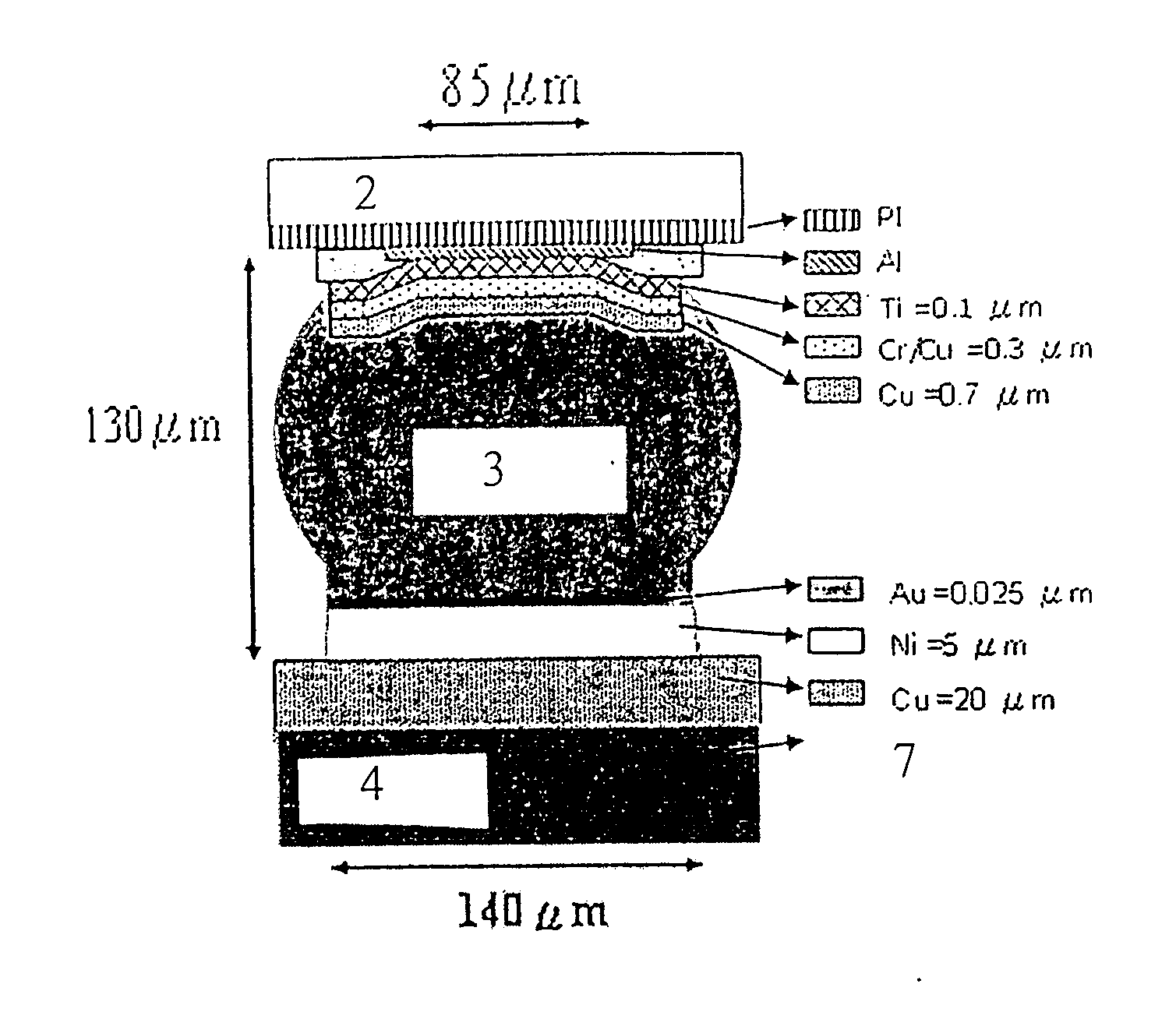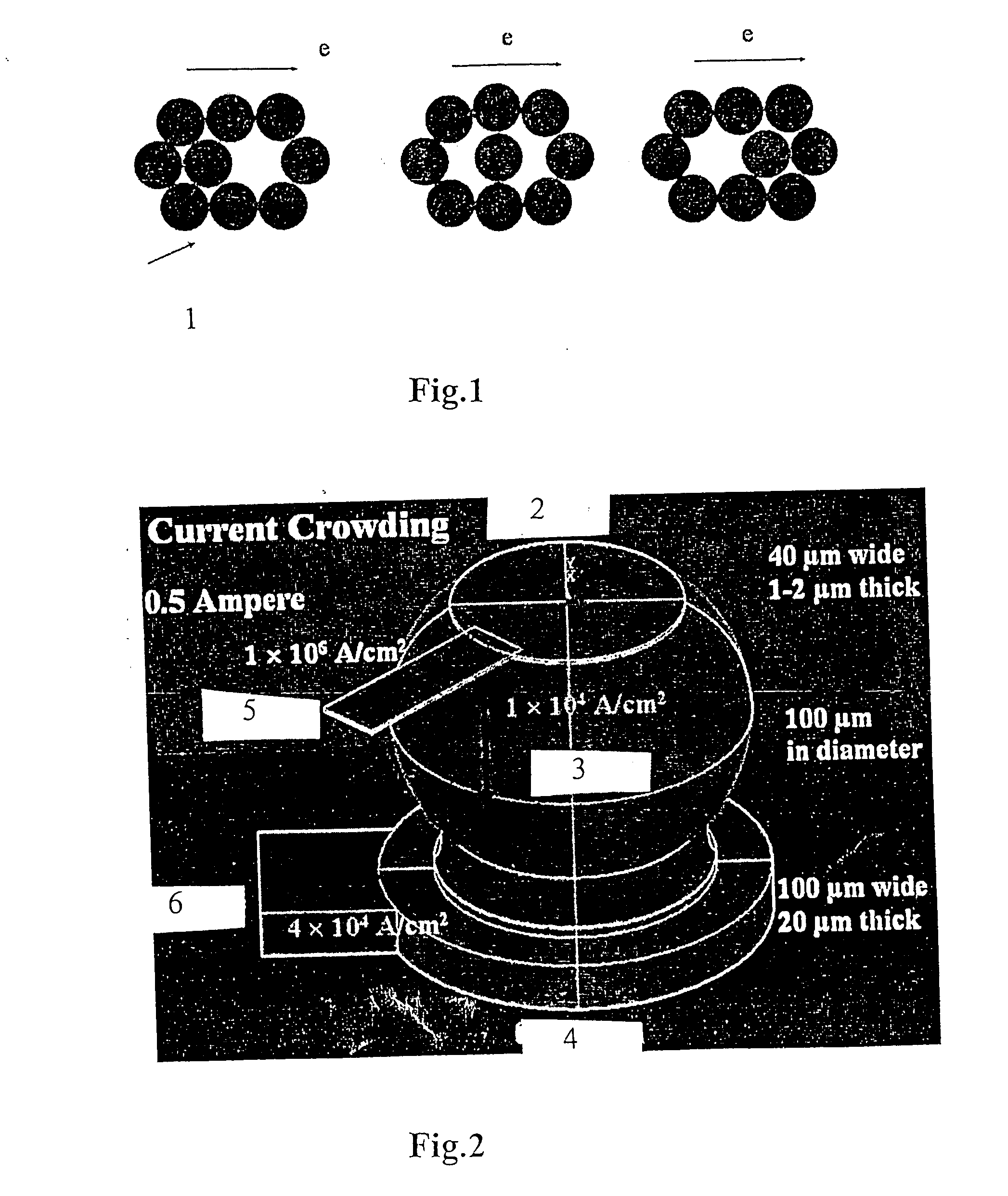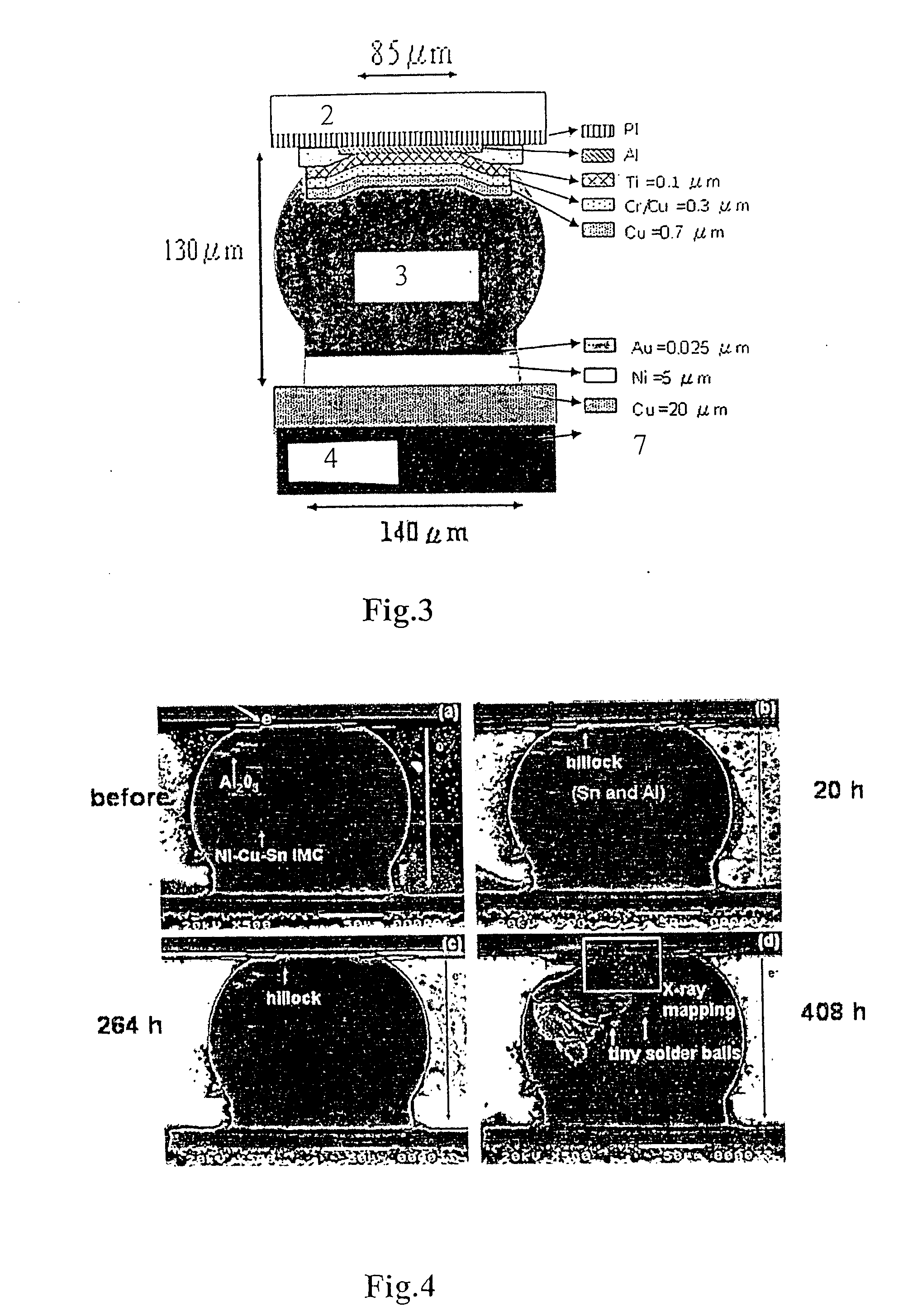Process for protecting solder joints and structure for alleviating electromigration and joule heating in solder joints
a solder joint and structure technology, applied in the direction of electrical apparatus, semiconductor devices, semiconductor/solid-state device details, etc., can solve the problems of serious reliability problems, heat dissipation, and electromigration in these small solder bumps, and achieve the effect of alleviating current crowding effect, and reducing the size of solder bumps
- Summary
- Abstract
- Description
- Claims
- Application Information
AI Technical Summary
Benefits of technology
Problems solved by technology
Method used
Image
Examples
embodiment
[0038] The present embodiments include electromigration studies made through the following limited elemental analysis, IR temperature detection analysis, and actual solder bumps, however, the concepts and claims of the present invention are not limited thereto.
1. General Solder Production and Reliability
[0039] A current of 0.5 A was applied to solder bump 3 with the specific geometric shape shown in FIG. 2, the current density of aluminum lead and bump were 1×107 and 1×104 A / cm2 respectively, further, the resistance was 180 mΩ for aluminum lead 5 and 8 mΩ for bump 3. The resistance differences and the specific geometric shape enabled the majority of electrons moving toward the left side of the bump 3 then flowing down, and accelerated the damage of the joints between aluminum lead 5 and solder bump 3. In addition, Joule heating effect was larger in aluminum lead 5, thus temperature gradient was created in solder bump 3 to further promote the occurrence of electromigration, and cr...
PUM
 Login to View More
Login to View More Abstract
Description
Claims
Application Information
 Login to View More
Login to View More - R&D
- Intellectual Property
- Life Sciences
- Materials
- Tech Scout
- Unparalleled Data Quality
- Higher Quality Content
- 60% Fewer Hallucinations
Browse by: Latest US Patents, China's latest patents, Technical Efficacy Thesaurus, Application Domain, Technology Topic, Popular Technical Reports.
© 2025 PatSnap. All rights reserved.Legal|Privacy policy|Modern Slavery Act Transparency Statement|Sitemap|About US| Contact US: help@patsnap.com



